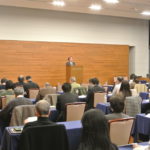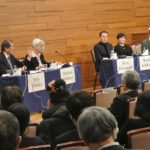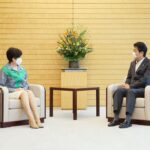The prospect of accelerating DX (digital transformation) in Japan is giving rise both to anxiety and excitement. Sano Kentaro reports on public and private efforts to promote digitalization.
The prevailing tone of the debate on globalization in Japan has always been one of pessimism, perhaps due to the national character reflecting an island nation mentality. At the time of the collapse of the economic bubble, the Lost Decades, and the Lehman Shock, and now in the midst of the COVID-19 crisis, a commonly voiced issue is the fact that Japan’s IT and AI sectors are lagging behind the rest of the world.
In his policy speech in the Diet in October 2020, Prime Minister Suga Yoshihide set the creation of a digital society as a key policy. He declared that in the course of the next two-and-a-half years, the government will promote the integration of the health insurance card and My Number (social security and taxation identification) card, and the digitalization of the driver’s license. Further, he declared that within five years, the government will pursue the regulatory reform of administrative procedures, geared to digitalization and their online transition. In addition, the government will promote Digital Transformation (DX) policies, such as diversifying supply chains that were exposed as vulnerable by COVID-19, promoting automation and unmanned operation through digitalization and robotic technology, and enhancing domestic production systems for the medical and health sectors and advanced industries. However, many IT-related policies have been set out in the past, so there is a sense of déjà vu. DX is also dogged by criticism and pessimism for lagging behind the times.
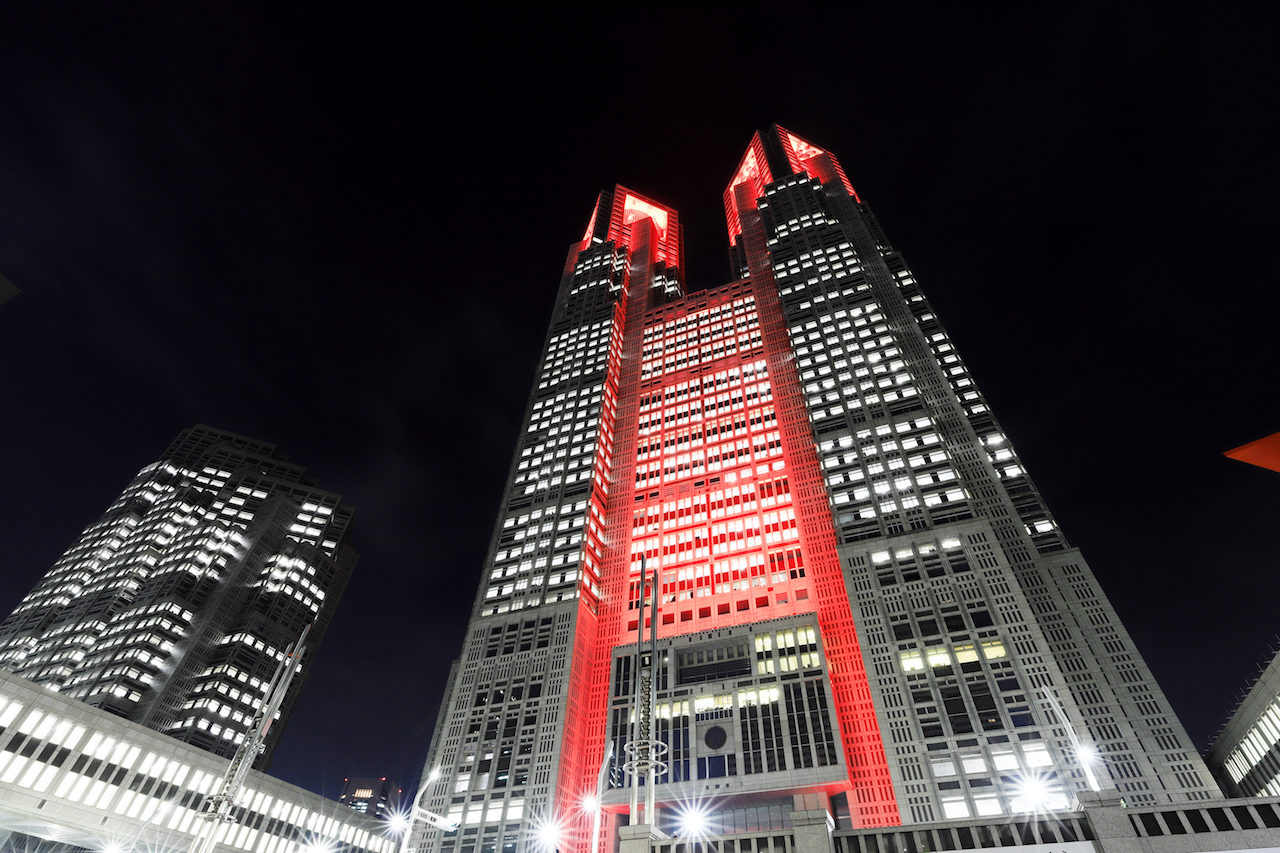
High anxiety: The Tokyo Metropolitan Government Building puts Tokyo citizens on red alert as the number of new coronavirus infections increased, June 2, 2020.
The first time the public will get a glimpse of life post-DX may be at Expo 2025 in Osaka, Kansai. The theme of the Expo is “Designing Future Society for Our Lives,” and its goals are “To contribute to the achievement of the Sustainable Development Goals (SDGs)” and “Achievement of Japan’s national strategy Society 5.0.” From a post-Coronavirus perspective, the Expo is set to be an interesting event with its sub-themes of “Saving Lives,” “Empowering Lives” and “Connecting Lives.”
However, the prospect of DX is giving rise to anxiety on two fronts. One is anxiety relating to income reduction, unemployment, and bankruptcy due to the COVID-19 pandemic. The other is anxiety relating to the effect on employment of automation and unmanned operation that the policy aims to realize. Concern persists over the further widening of social disparities that had been widening before Coronavirus, and there is considerable doubt regarding the ability of DX to close that gap. The number of COVID-19 related unemployed is 88,574 (as of February 2021), while the number of new coronavirus related bankruptcies among corporations and sole proprietors nationwide is 1,076 in the year from February 2020. In this economic climate, fear about future employment is understandable if DX is going to propel the move to automation and unmanned operation.
Considerable doubt also exists as to whether DX will in fact become more widespread. The key to promoting DX is said to be the My Number card. This is based on the My Number system, which came into force in January 2016 and assigns a personal number to all residents and corporations in Japan. However, only a quarter have obtained a My Number card. Underlying this low take-up rate is a traditional attachment to tangible objects and low level of trust in respect of intangible things. Credit cards, and more recently, electronic money and online payments, have not caught on widely. Moreover, the balance of financial assets held by individuals at the end of fiscal 2019 was 1,845 trillion yen (1,903 trillion yen at the end of 2020), yet cash and deposits accounted for only 54.2% of the total and listed stock investments accounted for just 5.0%.
The reluctance to obtain a My Number card may also be attributed to another underlying factor. Japanese people have always preferred to use their hands to create something rather than shake hands and talk business. In Japan, monozukuri (conscientious manufacturing) is permeated with the principle of genchi genbutsu (actual place, actual thing), which means going to the manufacturing site where the work is actually done, directly observing the part produced, and analyzing it thoroughly in order to understand it correctly. For example, Toyota Motors, known for its kaizen philosophy of continuous improvement, employs a method of quality control referred to as san gen shugi (the three actuals, or 3Gs). The 3Gs denote visiting the “actual site” (genba) to check out the environment, holding the “actual thing” (genbutsu) in your hands, and observing the “reality” (genjitsu) first-hand to understand the facts.
A Prototype City of the Future
Now Toyota is attracting attention for its urban planning.
On January 6 in 2020, at CES 2020 in Las Vegas, Toyota announced that the company will prepare the construction of the “Woven City,” a prototype city for an era in which all ecosystems that support everyday life are connected with data.
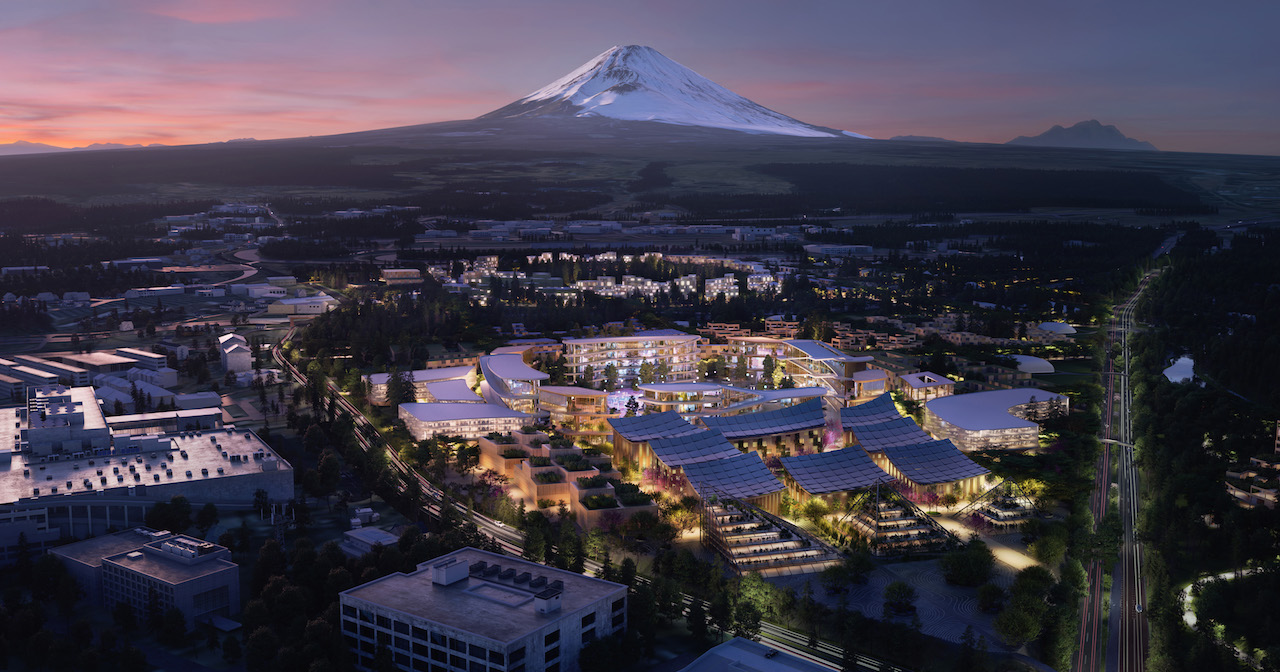
Artist’s impression of Toyota’s Woven City in the foothills of Mount Fuji, Shizuoka Prefecture. Toyota’s track record in the field of monozukuri (conscientious manufacturing) lends a comforting sense of the “real world” to its “programmable city” project. PHOTO COURTESY OF TOYOTA MOTOR
Toyoda Akio, president of Toyota said, “Building a complete city from the ground up, even on a small scale like this, is a unique opportunity to develop future technologies, including a digital operating system for the city’s infrastructure. With people, buildings and vehicles all connected and communicating with each other through data and sensors, we will be able to test connected AI technology… in both the virtual and the physical realms… maximizing its potential.”
On February 23, 2021, Toyota and Woven Planet Holdings held a groundbreaking ceremony for the construction of Woven City on a 175-acre site close to Mt. Fuji.
According to the news release of Toyota, Woven City is a project that will demonstrate a human-centered approach to community development.
This project will bring new technology to life in a real-world environment across a wide range of areas, such as automated driving, personal mobility, robotics and AI. Toyota explains that Woven City will have three types of streets interwoven with each other on the ground level, one dedicated to automated driving, one to pedestrians, and one to pedestrians with personal mobility vehicles. There will also be one underground road used to transport goods. The community will start with roughly 360 residents, mainly senior citizens, families with young children, and inventors, and will eventually have a population of more than 2,000 individuals including Toyota employees. The infrastructure of Woven City aims to create an environment where inventions with the potential to solve social issues are created on a timely basis.
Toyota’s engagement with advances in AI and IT is garnering high expectations, the company’s track record in the world of monozukuri conferring credibility on its urban planning project. Those who experienced the dream-like era of high growth are now elderly. It is the middle-aged and younger generations who have the task of forging a path for the future, but the era in which they are living offers no shared hopes, no way to discover a purpose in life. It will not be easy to get the public on board. Whether the public will understand and accept that the promotion of DX is about improving convenience will depend on how well the government can convey that message. Because those who were forced online by the COVID-19 pandemic have a growing desire to return to the real world where they can feel the joy of human touch.
SANO Kentaro is a freelance writer.




